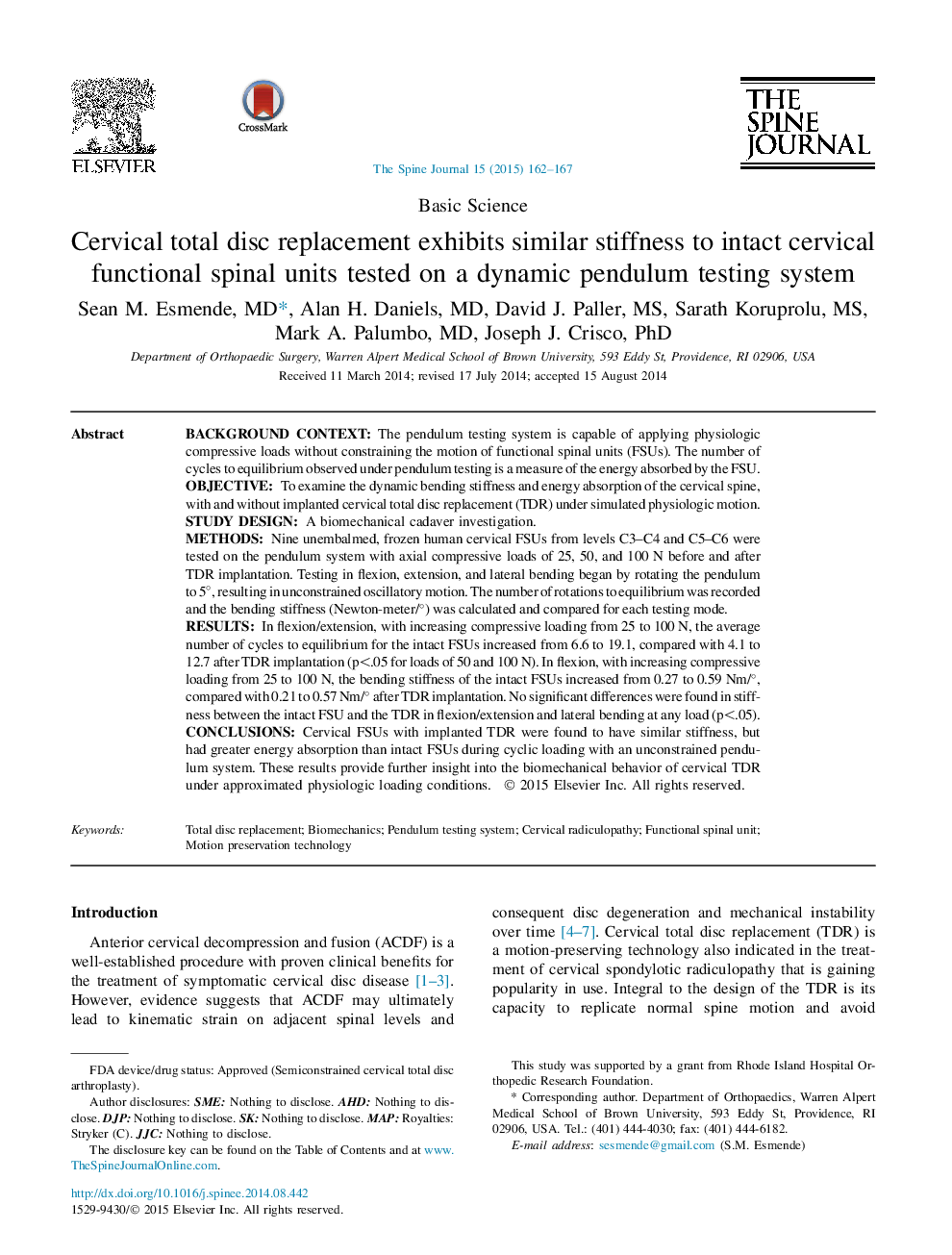| کد مقاله | کد نشریه | سال انتشار | مقاله انگلیسی | نسخه تمام متن |
|---|---|---|---|---|
| 4096514 | 1268564 | 2015 | 6 صفحه PDF | دانلود رایگان |
Background contextThe pendulum testing system is capable of applying physiologic compressive loads without constraining the motion of functional spinal units (FSUs). The number of cycles to equilibrium observed under pendulum testing is a measure of the energy absorbed by the FSU.ObjectiveTo examine the dynamic bending stiffness and energy absorption of the cervical spine, with and without implanted cervical total disc replacement (TDR) under simulated physiologic motion.Study designA biomechanical cadaver investigation.MethodsNine unembalmed, frozen human cervical FSUs from levels C3–C4 and C5–C6 were tested on the pendulum system with axial compressive loads of 25, 50, and 100 N before and after TDR implantation. Testing in flexion, extension, and lateral bending began by rotating the pendulum to 5°, resulting in unconstrained oscillatory motion. The number of rotations to equilibrium was recorded and the bending stiffness (Newton-meter/°) was calculated and compared for each testing mode.ResultsIn flexion/extension, with increasing compressive loading from 25 to 100 N, the average number of cycles to equilibrium for the intact FSUs increased from 6.6 to 19.1, compared with 4.1 to 12.7 after TDR implantation (p<.05 for loads of 50 and 100 N). In flexion, with increasing compressive loading from 25 to 100 N, the bending stiffness of the intact FSUs increased from 0.27 to 0.59 Nm/°, compared with 0.21 to 0.57 Nm/° after TDR implantation. No significant differences were found in stiffness between the intact FSU and the TDR in flexion/extension and lateral bending at any load (p<.05).ConclusionsCervical FSUs with implanted TDR were found to have similar stiffness, but had greater energy absorption than intact FSUs during cyclic loading with an unconstrained pendulum system. These results provide further insight into the biomechanical behavior of cervical TDR under approximated physiologic loading conditions.
Journal: The Spine Journal - Volume 15, Issue 1, 1 January 2015, Pages 162–167
